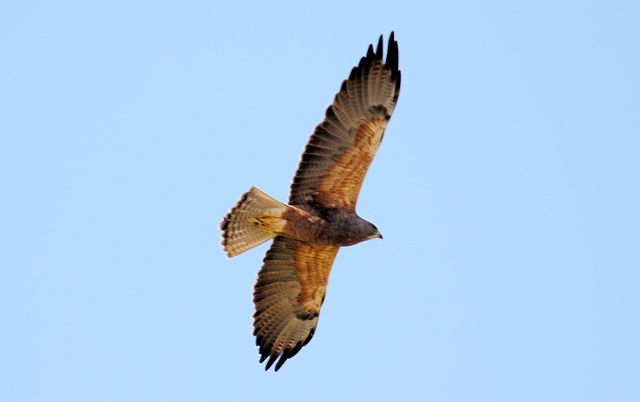USAF T-38C Downed by Bird Strike
On 17 August 2018, Northrop Grumman T-38C Talon 68-8206 of the USAF 71st Flying Training Wing, crashed in a field approximately 62 miles west of its base at Vance AFB, Oklahoma.
The jet trainer was the lead of a two ship formation performing low-level training. The USAF Accident Investigation Board report, released 20 March 2019, explains that:
While flying at approximately 1,000-1,500 feet above the ground and looking over his left wing at his wingman, the [pilot of the T-38C] heard a loud noise on the right side of the aircraft.

USAF Northrop Grumman T-38C Advanced Trainer from Lackland AFB, TX (Credit: USAF Master Sgt Lance Cheung)
The pilot, an instructor and the sole occupant, then heard an audible fire warning, saw the right (number 2)engine fire light and detected indications of right-hand flight control hydraulic and right generator failures.
While initiating a climb away from the low-level route, the [pilot] experienced a degradation in aircraft controllability and his wingman reported seeing a visible fire…. The [pilot] successfully ejected from the aircraft, sustaining minor injuries.
The aircraft was approximately 3,000 feet AGL, 195 knots, 10 degrees nose low, and with a descent rate of 3,500 feet per minute [with] approximately 60 degrees of right bank at the time of ejection.
The T-38C, valued at $11mn, was destroyed.
The investigation found the aircraft had ingested a Swainson’s Hawk, typically 0.9 kg (32 oz), into the number 2 engine. The bird was identified by experts at the Smithsonian Institute.
Investigators say:
This bird strike caused the catastrophic loss of the engine and a fire in the forward engine bay. The fire melted through the aircraft skin, exposing the Flight Control and Utility Hydraulic Systems’ flexible hydraulic pressure and return lines to extreme heat, causing the degradation, and ultimate loss, of aircraft controllability. However, the fire and loss of flight control authority necessitated ejection…
Safety Resources
We have previously written:
- USAF HH-60G Downed by Geese in Norfolk, 7 January 2014
- Swedish Military NOE Helicopter Bird Strike: During a low-level night two-ship training flight a Swedish Armed Forces Agusta 109LUH collided with a large bird.
- Safety Lessons from a Fatal Helicopter Bird Strike: A fatal accident occurred on 4 Jan 2009 involving Sikorsky S-76C++ N748P of PHI that highlighted a range safety lessons. We also discuss current activity on enhancing bird strike requirements.
- Power of Prediction: Foresight and Flocking Birds looks at how a double engine loss due to striking Canada Geese had been predicted 8 years before the US Airways Flight 1549 ditching in the Hudson (which was just days after the Louisiana helicopter accident).
- NTSB Recommendations on JT15D Failure to Meet Certification Bird Strike Requirements
- Final Report Issued on 2008 Bird Strike Accident in Rome
- USMC CH-53E Readiness Crisis and Mid Air Collision Catastrophe
- RCAF Production Pressures Compromised Culture
- Investigation into F-22A Take Off Accident Highlights a Cultural Issue
- AC-130J Prototype Written-Off After Flight Test LOC-I Overstress
- C-130J Control Restriction Accident, Jalalabad
- Korean T-50 Accident at Singapore Airshow
- UPDATE 30 March 2019: Contaminated Oxygen on ‘Air Force One’ Poor standards at a Boeing maintenance facility resulted in contamination of two oxygen systems on a USAF Presidential VC-25 (B747).
- UPDATE 30 October 2019: ‘Crazy’ KC-10 Boom Loss: Informal Maintenance Shift Handovers and Skipped Tasks
- UPDATE 7 November 2020: Deadly Dusk Air Ambulance Bird Strike
- UPDATE 30 December 2020: AS350B3/H125 Bird Strike with Red Kite
- UPDATE 23 March 2022: Big Bustard Busts Blade: Propeller Blade Failure After Bird Strike
About 8% US military of all Class A, B and C aviation mishaps from fiscal 2011 through 2017 resulted from wildlife strikes, according to data obtained by Military Times.


Recent Comments